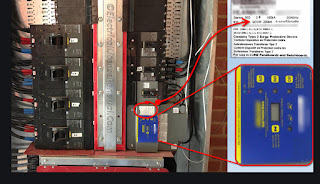National Electric Code 2020 Updates


The National Electric Code (NEC) is revised every 3 years. All 50 states utilize the code for their standards. I am going to outline the updates from the previous version. One of the changes I was glad to see is that service panels with 6 main disconnects are no longer permitted. I have long advised my clients to upgrade split panel service panels. Trying to explain how to disconnect the service and the fact that some breakers, many times 240 volt circuits actually cannot be disconnected. This makes the panel dangerous to work on. The homeowner’s are often confused on which breaker is actually the “main” when several breakers are either marked or look like a main service disconnect. Load calculations will also be reduced to account for higher efficiency appliances and lighting options. There has been a huge reduction in this area and many times a smaller service size (depending on the house) will be adequate. When I started performing home inspections the 240 volt appliances were 50-60 amps. Now those same appliances are 20-40 amps. Here are the other updates that a home inspector needs to know:
- Outdoor Emergency Service Disconnects are now required for one and two family dwellings. This is to ensure first responders, especially fire fighters can disconnect the electric supply to the house
- Ground Fault Circuit Interrupters (GFCI) are now required on most 120 – 240 volt branch circuits. This includes clothes dryers, ranges, ovens, etc.
- Serge protection devices are required for all dwelling units. Many home inspectors recommend these are installed.
- Service panels with 6 main service disconnects are no longer permitted
- Line side barrier requirements are required and expanded to service beyond the main electric panels. (This is for shock protection. The barriers protect from energized conductors on the line terminals of the main over current protection device in a service panel) – Picture above
- Short Circuit Current Ratings connectors and devices must be marked suitable for use on the line side of the service equipment. We are seeing more of these devices as homeowners are looking for energy efficiency. – Picture above
- Temporary power equipment (we see this on new construction that is not complete) require markings for available fault current and date of calculation. For temporary over current devices between 150 volts to ground and 1000 volts phase to phase will be current limiting
- ARC reduction for services 1200 amps and greater must ensure arcing currents activate ARC reduction technology.
Related Articles:
- GFCI Inspections
- The New Aluminum Wiring
- Required Dedicated Branch Circuits
- Is That a 120 Volt Service? (VIDEO)
Want To Learn More? Click HERE to Search Our Full Database Of Home Inspector Newsletters.



